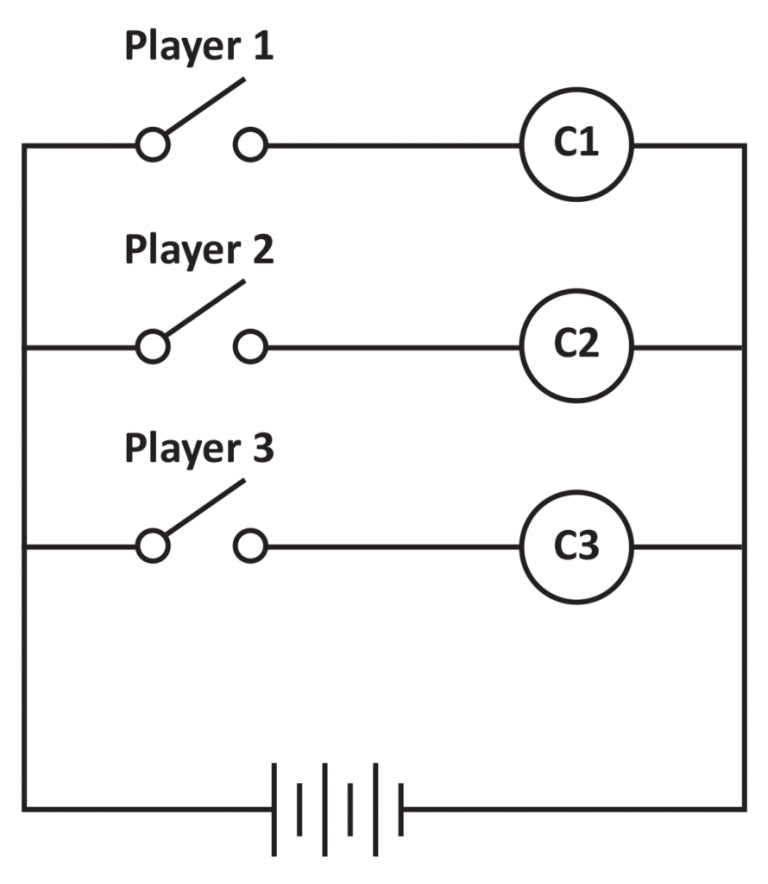Welcome to the final installment of our series on Electricity!
Here is What I Covered in the Last 3 Articles
In this article, I will be discussing an unusual question I came across the other day.
Usually, schools test students on the arrangements of bulbs. However, the circuit in this question had an interesting twist.
Question

Thought Process
For a counter to light up, there must be a complete circuit that allows electricity to flow through the counter. However, we can see from Jason’s circuit that the three switches are arranged in series, and all three switches have to be closed in order to complete the circuit.
Let us use a scenario to see the problem more clearly.
Scenario
When only Player 1 presses his switch, there would still be an open circuit, since Players 2 and 3’s switches remain open. Therefore, Player 1’s counter will not light up.

The circuit remains open.
In this circuit, for any player’s counter to light up, all the players must close their switches to form a complete circuit. However, when that happens, all of the counters will light up at the same time! It would not be possible to tell which player was the fastest to press his switch, and it would not be possible to tell which player the point should belong to.
Read Also
Final Answer
Therefore, the answer should be:
“(Answer the question) His electric circuit will not work according to the rules he set.
(Explanation) When a player presses a switch, the other switches remain open and there would still be an open circuit. Electric current will not be able to flow through the player’s counter, preventing it from lighting up.
(Link back to the question) Since the player’s counter will not light up when he presses the switch, the player will not get the point he is supposed to, and the game will not work with these rules and this electric circuit.”
On a side note…
Rule 1 states that “Each player is supposed to get a point each time his counter lights up when he presses the switch”.
For an electrical circuit to work according to this rule, the counters must be controlled independently, which is an advantage provided by parallel circuits. (Recall the properties of the different circuit arrangements covered in the blog post on Arrangement of Bulbs in Circuits.)
Therefore, a more suitable electric circuit for this game would look like this:

This marks the end of our series on Electricity!
These four articles have covered the concepts in Electricity that students tend to struggle with. I hope that through this series of articles, you have gained a better understanding of Electricity, and feel more confident now about tackling questions on Electricity!

If you like our approach behind solving 'Electricity' questions, perhaps you may be interested to check out our upcoming Electrical Circuit Masterclass where we'll dive deep into several answering techniques and practice questions.
Click Here To Learn More About The Electrical Circuit Masterclass >>







